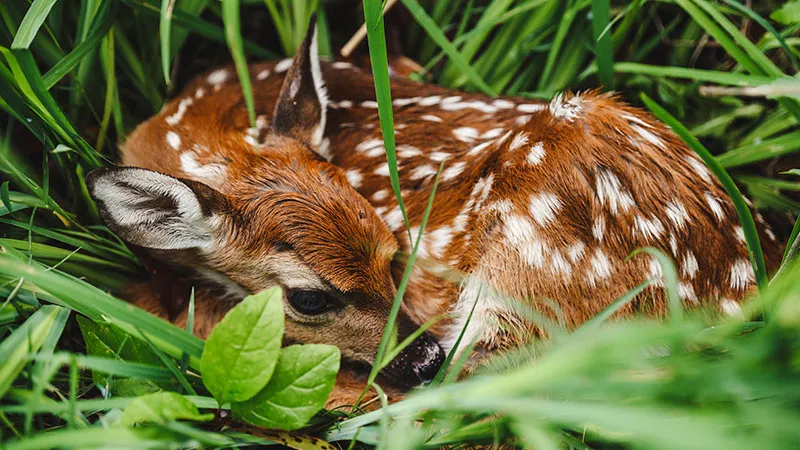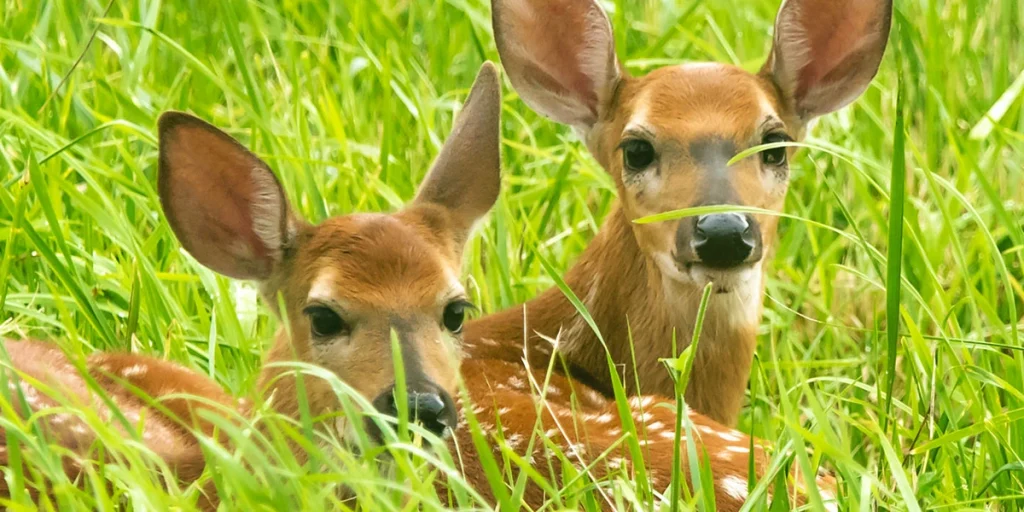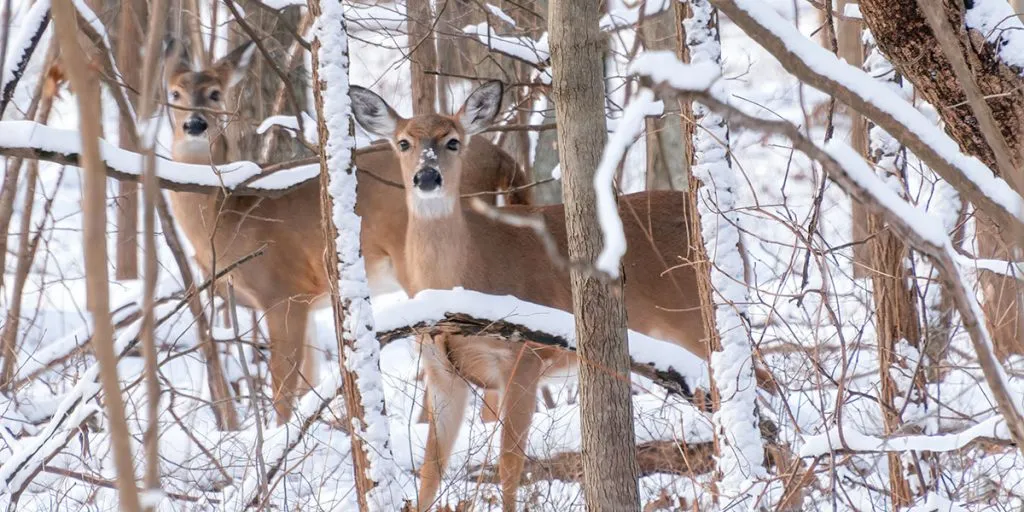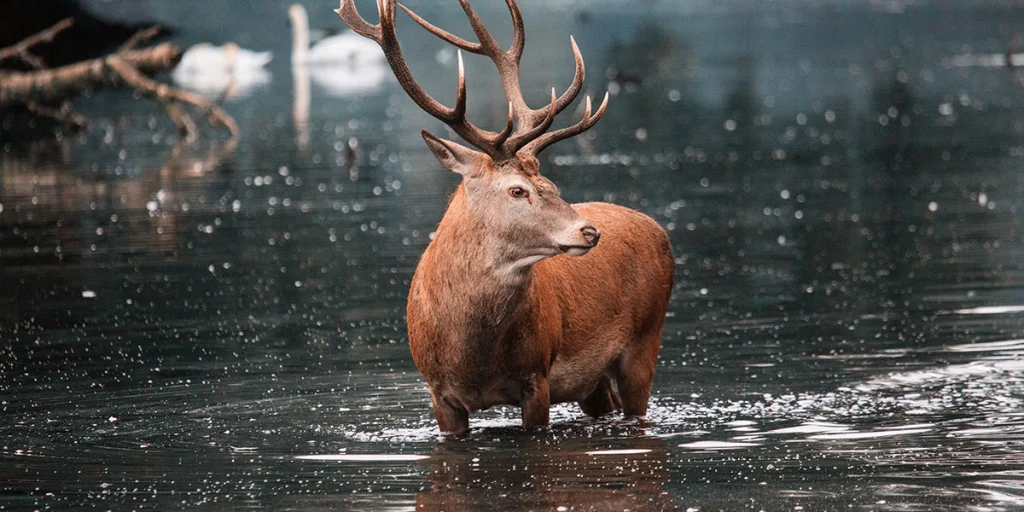Don’t touch a seemingly abandoned baby deer. Mother deer temporarily leave their fawns to hide in the tall grass regularly — sometimes for multiple days. The very survival of the young animal might depend on you not interfering with nature.
Humans should never touch or pet a wild fawn. Baby deer are left alone on purpose to make it as hard as possible for predators to find them. If a human touches, moves, or pets a fawn the mother will stay away longer and the scent might attract predators to the location of the fawn.
Interfering with the fawn will usually do more harm than good. Baby deer are often left alone in their hiding spot, sometimes for several days. The mother goes out to forage for food and will always come back to her fawn, unless she senses that others have been nearby. The YouTube video below explains why:
What To Do If You Encounter A Fawn
When you encounter a baby deer in nature, or even on someone’s lawn, proceed with extreme caution. It is almost always better to do nothing than to do anything at all, even if the animal might appear weak or injured:
- Do not get any closer: Do not approach the animal under any circumstance, except if it is immediately being attacked by a predator. Getting closer will just cause it to be more stressed or flee, which can be dangerous for the fawn.
- Never touch a fawn: Touching, moving, or petting wildlife is irresponsible on many levels. The survival of the fawn is dependent on its ability to hide. It does not want to be spotted, and moving it will make it impossible for the mom to find her offspring again.
- Give the animal space: If the fawn is scared and feels like it is ‘found’, it will attempt to flee. This is basically a death sentence for a young fawn, as the mother is unable to find her babies when she returns.
Hiding And Not Moving Is Natural Behavior
If you encounter a calm fawn hidden in tall grass, this is a good sign. This fits the expected natural behavior pattern of the animal. Fawns are ‘hiders’, meaning that they basically experts in the game of hide-and-seek. They don’t do that for fun, but they do it to survive!
The first few weeks after fawns are born, they need to gather strength to escape potential predators. Very quickly, the youngsters will be able to outrun a lot of other species, including those that might threaten them the most:
- At 5 days old, a baby deer is able to outrun the average human
- At 6 to 10 weeks old, a baby deer is fully grown and able to outrun most of their natural predators
Screaming Baby Deer Are Stressed
If you happen to encounter a baby deer because it was bleating and screaming, the animal is already under great stress. It is probably screaming because there are people or dogs nearby. It is not screaming because it is experiencing pain or hunger, it does NOT need help!
Getting closer to a screaming fawn will just cause it to panic even further.
Calming fawns down by touching will have the opposite effect. It will simply panic and try to escape. To make matters worse, you will spread your scent all over the animal. The Wildlife Aid Foundation expert in the YouTube video below explains the problem perfectly:
If The Fawn Looks Sick Or Injured
Baby deer that hide away might look weak because of their curled-up pose. But encountering a weakened or injured fawn is very rare. It is probably shaking because it is full of adrenaline (from the stress of encountering you).
Are you absolutely sure the animal is hurt or needs professional help to survive? Still don’t touch it and don’t come near it.
Instead, call your local wildlife rehabilitation center to inspect the situation. If the baby needs help, they will take it with them to recover in a responsible way. It is illegal to collect a wild animal for safekeeping, as it requires a specialized diet and can get attached to humans quickly.

Also read: 7 Surprising Facts About Deer Hooves
Interfering With Fawns: A Common Problem
Sadly, a lot of people are not informed about the natural behavior of their local wildlife. For humans, it is counterintuitive to not help a shaking, scared baby deer. Their body language screams one thing: help me! But the reality is actually completely the opposite.
The absence of the mother deer might seem strange and worrisome to us humans. But this too has its purpose — to keep predators away.
Hiding is the natural survival strategy of a baby deer. Touching it will spread human scent all over it, making it harder for the mother and easier for predators to find the fawn. By wanting to save the animal, you create more problems than solve them. Do not interfere with nature.
The only thing you can do if you’re worried about a wild fawn, is to remember where you find a fawn and come back the next day. In almost all cases, the baby deer will leave and relocate again, together with its deer mom. And then their natural hiding process will start all over again.



